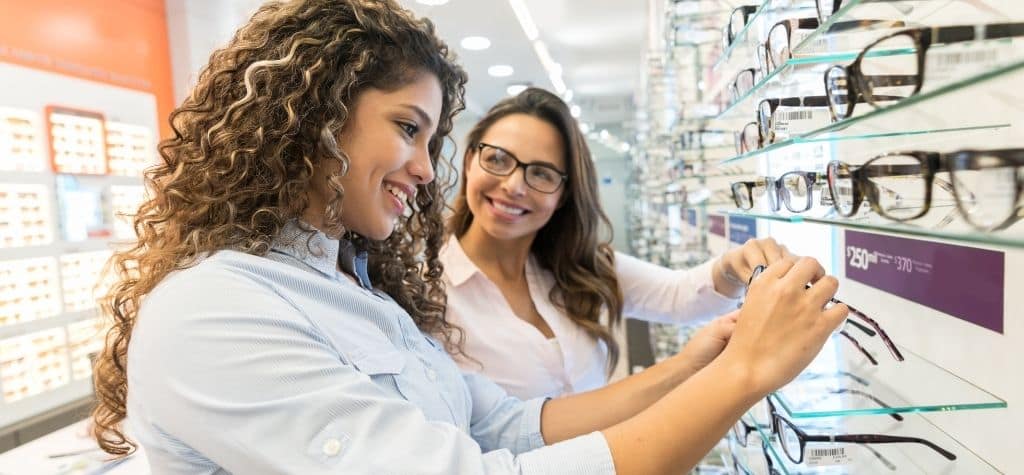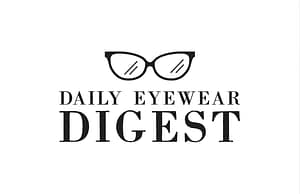Your Guide to 2026 Eyewear

Eyewear is no longer just about seeing clearly. In 2026, glasses and sunglasses have become fashion statements, high‑tech gadgets, and eco‑friendly accessories. Millions of Americans rely on eyewear every day, and trends in lenses, frames, and technology change rapidly. The Vision Council’s latest report found that more than 240 million adults in the United States (92 percent of the population) regularly use some form of eyewear. The optical industry reached a total market value of $68.3 billion in 2024, up 2.7 percent from 2023. With such a large market, it is no surprise that new designs and technologies emerge each year.
This article dives into the top eyewear trends expected to shape the US market in 2026. We will explore how consumer behavior and economic factors influence styles, highlight emerging innovations like smart glasses and 3D‑printed frames, and offer guidance on choosing eyewear that looks great and protects your eye health. Each section uses easy‑to‑read language, short paragraphs, and bullet lists to help you absorb the information quickly. We also cite reliable sources from government agencies, universities, and reputable research groups to support the insights.
A Snapshot of the U.S. Eyewear Market
Before examining specific trends, it helps to understand the market’s current state. According to The Vision Council’s 2024 Market inSights report:
- Widespread use: Over 240 million U.S. adults wear some form of eyewear .
- Growing value: The optical industry was valued at $68.3 billion in 2024, a 2.7 percent increase from 2023.
- Prescription vs. non-prescription: Glasses lenses led prescription sales at $17.2 billion in 2024, while plano (non‑prescription) sunglasses dominated the non‑prescription category at $17.8 billion.
- Changing spending habits: After a surge in 2022, consumer spending stabilized. The Vision Council noted a shift toward budget‑friendly eyewear as many shoppers sought cost‑effective options.
- Online purchasing: Online sales were particularly strong for contact lenses and plano sunglasses, with 39 percent and 32 percent of their sales originating online, respectively.
- Product category performance: Eye exams increased in value and volume by three and one percent. Plano sunglasses saw a 15 percent increase in value and an 8 percent increase in volume, while reading glasses experienced a six‑percent volume increase but a two‑percent decline in sales value.
This data shows that eyewear is an essential part of life for most Americans and that consumer preferences can change quickly. Budget consciousness, online shopping, and the popularity of sunglasses all play a role in shaping 2026 trends.
Consumer Behavior and Budget‑Friendly Choices
Economic uncertainty has made shoppers more thoughtful about eyewear purchases. The Vision Council’s report observed continued stability in consumer spending with a move toward more conservative and budget‑friendly options. This shift influences which trends gain traction:
- Affordable fashion: Brands are offering stylish frames at lower price points to appeal to value‑oriented consumers. Expect to see more “dupes” of designer frames and collaborations with fast‑fashion retailers.
- Multipurpose eyewear: Consumers want glasses that serve multiple functions. Frames that transition from the office to social events or from daytime to evening are in demand. Photochromic lenses, which darken in sunlight and remain clear indoors, are a cost‑effective option.
- Subscription services: Online retailers now offer glasses subscription plans, allowing customers to receive new frames every few months for a flat fee. This model appeals to people who like changing styles without a significant upfront cost.
Budget‑friendly does not mean poor quality. Many brands use high‑quality materials like stainless steel, titanium, and durable acetate while maintaining accessible prices. The market’s volume ensures that manufacturers can produce stylish frames at lower costs.
Smart Glasses and AI Wearables Go Mainstream

One of the most exciting trends for 2026 is the rise of smart glasses. Research firm Omdia predicts a global surge in AI‑enabled eyewear. A 2025 analysis reported that global shipments of AI glasses are expected to increase by 158 percent to 5.1 million units in 2025 and to exceed 10 million units by 2026. Shipments are projected to reach 35 million units by 2030, representing a 47 percent compound annual growth rate.
Smart glasses incorporate artificial intelligence and augmented reality (AR) into everyday eyewear. Features include voice‑activated assistants, real‑time translation, navigation prompts, and hands‑free photography. Major tech companies—Meta, Google, Xiaomi, and others—are racing to improve these devices. Omdia notes that the U.S. remains the largest market, while China is expected to become the second‑largest by 2026, shipping 1.2 million units.
Why Smart Glasses Are Trending
- Convenience: Smart glasses free your hands and let you receive notifications, translate languages, or capture photos without pulling out a phone.
- Fashion meets tech: Collaborations between tech companies and fashion houses (e.g., Meta’s partnership with Ray‑Ban and EssilorLuxottica) aim to make smart glasses stylish and wearable.
- AI integration: On‑device AI models can deliver context‑aware assistance, providing translations or information based on what you see.
- Early adoption by professionals: Workers in logistics, healthcare, and manufacturing use smart glasses for hands‑free instruction and training. This increases awareness and drives consumer curiosity.
Despite excitement, Omdia’s analysts caution that privacy concerns and social hesitation may slow widespread adoption. Cameras and microphones in glasses raise questions about surveillance, while wearing them all day may feel awkward for some. Vendors are addressing these issues by adding privacy‑indicator lights and designing devices that look like traditional eyewear.
Sustainable and Eco‑Friendly Frames
Sustainability is now a mainstream expectation, and eyewear brands are responding. Consumers increasingly value frames made from recycled plastics, plant‑based acetate, and metals sourced from ethical supply chains. Key trends include:
- Recycled acetate and plastics: Manufacturers are turning waste from the cotton industry into new acetate sheets. These materials look and feel like traditional acetate but reduce waste and carbon emissions.
- Bio‑based materials: Frames made from castor seed oil, wood pulp, or hemp offer renewable alternatives. They are lightweight and durable, appealing to eco‑conscious customers.
- Upcycling and take‑back programs: Some companies allow customers to return old frames for recycling or refurbishing. The frames are then resold at lower prices or donated.
While there is no single study capturing the environmental impact of every sustainable eyewear initiative, consumer demand for eco‑friendly products is clear. Choosing sustainable frames helps reduce plastic pollution and supports companies prioritizing ethical production.
Customization and 3D‑Printed Eyewear

Personalization is another major trend. Rather than settling for off‑the‑shelf designs, many people want glasses tailored to their facial features, preferences, or even fashion mood. Advances in 3D printing technology make this possible. A recent study published in the journal ACS Omega highlighted how 3D printers are now widely used in the optical industry. The technology allows personalized eyeglass frame design, offering freedom in color, shape, and size. In the study, researchers produced frames using thermoplastic filaments like acrylonitrile butadiene styrene (ABS) and polyethylene terephthalate glycol (PETG). They found that frames printed with a 0.20 mm layer thickness at 240 °C showed the lowest surface roughness, while those printed at 235 °C achieved the highest durability.
How 3D Printing Is Changing Eyewear
- Custom fit: 3D scanning can capture the shape of your face and create frames that fit perfectly. This reduces pressure points and improves comfort.
- Rapid prototyping: Designers can quickly test new shapes, colors, and materials. If you want an unusual color or pattern, 3D printing makes it possible.
- Reduced waste: Traditional manufacturing often involves cutting away excess material. 3D printing builds frames layer by layer, using only what is needed.
- On‑demand production: Frames can be printed near the point of sale, reducing shipping distances and inventory. This supports local businesses and reduces carbon emissions.
Some eyewear companies already offer online customization tools. Customers can choose frame shapes, colors, temple lengths, nose pad styles, and even engrave names on the arms. As 3D printing technology becomes more accessible, expect to see more personalized eyewear options in 2026.
Protecting Eyes from Digital Screens: Blue Light and Eye Strain
With more people working remotely or spending long hours on digital devices, digital eye strain has become a serious concern. Health experts from the Ohio State University note that people often work on computers for more than eight hours a day, leading to symptoms like blurred vision, headaches, and dry eyes. To combat this, eye‑care professionals recommend:
- The 20‑20‑20 rule: Every 20 minutes, look at something 20 feet away for at least 20 seconds to relax your eye muscles.
- Proper monitor placement: OSHA advises keeping the monitor directly in front of you at least 20 inches away with the top line of the screen at or below eye level. Adjust the height so you view the center of the screen 15–20 degrees below the horizon.
- Limit blue light before bed: Research from the National Institute for Occupational Safety and Health (NIOSH) explains that blue light strongly affects circadian rhythms by suppressing melatonin. To protect sleep patterns, avoid screens in the hour before bedtime or enable night mode filters.
- Blink often and adjust lighting: Blink frequently to keep your eyes moist. Reduce glare by positioning your monitor perpendicular to windows and adjusting brightness.
Blue Light Filtering Lenses: Trend or Necessity?
The rise of digital eye strain has fueled interest in blue light filtering glasses. These lenses claim to reduce the amount of blue light that reaches your eyes. While some people find relief, research is still mixed. Experts emphasize that the primary concern is not eye damage but sleep disruption and discomfort. Wearing blue‑blocking lenses can help if you work at night or struggle to sleep after evening screen use. However, they should complement other good habits, like taking regular breaks and adjusting screen settings.
Fashion‑Forward Frames: Shapes and Styles

Eyewear is both functional and fashionable. The following style trends dominate 2026:
Oversized and Retro Frames
Oversized frames continue to make a statement. Inspired by the 1970s and 1990s, large square and round shapes offer a bold, vintage look. They also provide more surface area to block UV rays and blue light. Transparent acetates and translucent colors like pale pink, teal, and amber add a modern twist to retro shapes.
Thin Metals and Minimalism
In contrast to oversized frames, minimalist styles with thin metal rims are also popular. Titanium and stainless steel frames are lightweight and strong. These frames often feature geometric shapes—hexagonal or octagonal—adding subtle interest without being overpowering. Minimalist frames pair easily with professional attire and suit people who want understated elegance.
Cat‑Eye and Angular Designs
Cat‑eye frames evoke glamour and have evolved into sharper, angular silhouettes. They flatter many face shapes and add a playful, confident flair. Designers are experimenting with asymmetry—one corner may be slightly higher than the other—to create unique shapes.
Color Blocking and Pattern Play
Colorful frames are gaining traction. Expect to see bold color blocking, tortoiseshell patterns in unexpected hues, and gradient fades. Some brands mix materials—metal temples with acetate fronts—for a contrasting effect. Colored lenses, like pale blue or rose, add mood and style.
Sport‑Inspired and Wraparound Sunglasses
Wraparound sunglasses are making a comeback, driven by the popularity of outdoor activities and sportswear fashion. These frames offer extra coverage, making them ideal for runners, cyclists, and beachgoers. They also align with the rising interest in AI glasses, as wraparound shapes provide space for sensors and batteries.
Lens Technologies: Photochromic, Polarized, and Progressive
The lens technologies behind your frames matter as much as the style. In 2026, several innovative lens types stand out:
- Photochromic lenses: Also called transition lenses, these darken in sunlight and return to clear indoors. They eliminate the need for separate prescription sunglasses. Photochromic coatings have improved, changing shade faster and offering better UV protection.
- Polarized sunglasses: These lenses reduce glare from reflective surfaces like water, snow, and glass. The National Eye Institute advises choosing sunglasses labeled as providing 99 to 100 percent UV protection or UV400. Polarized lenses help enhance contrast and clarity while protecting against harmful UV rays.
- Progressive and digital lenses: Progressive lenses provide seamless correction for near, intermediate, and distance vision. In 2026, digital lens technology allows for custom designs based on each eye’s prescription. This improves clarity and reduces distortion at the edges. Many brands offer “office lenses” optimized for computer work, where intermediate and near vision are prioritized.
Sun Protection: UV Safety Remains Critical
Fashion trends aside, protecting your eyes from ultraviolet (UV) radiation is non‑negotiable. The National Eye Institute warns that UV light can damage your eyes and increase risk for conditions like cataracts and cancer. To stay safe:
- Choose sunglasses with 100% UVA and UVB protection or UV400 rating.
- Select wraparound or oversized frames to block light from the sides.
- Wear a wide‑brimmed hat to shade your eyes and reduce glare.
- Avoid direct sunlight during peak UV hours (10 a.m. to 4 p.m.). Even on cloudy days, UV levels can be high.
Eye health should always take priority over trends. When buying sunglasses, look for labels indicating full UV protection. Don’t assume a darker lens offers better protection; check the UV rating.
Shopping Experience: Online and Omnichannel

The way consumers shop for eyewear is evolving. The Vision Council notes that 32 percent of plano sunglasses and 39 percent of contact lenses are purchased online. This shift has several implications:
- Virtual try‑on tools: Many websites allow you to upload a photo or use your webcam to see how frames look on your face. This technology reduces the need for in‑store visits and encourages experimentation.
- Home try‑on kits: Online eyewear companies often ship several frame samples to your home. You can try them for a few days and then return the ones you don’t like. This service is convenient but may require a credit card hold.
- Hybrid retail models: Some brands maintain physical stores for eye exams and fittings while selling frames online. This “omnichannel” approach offers convenience and personalized service.
When shopping online, remember that prescription accuracy, fit, and lens quality matter. Ensure the retailer accepts returns or adjustments if the frames don’t fit properly. Visit an optometrist for regular eye exams and updated prescriptions.
Ethical Considerations and Privacy
Technology‑enhanced eyewear raises ethical questions. Smart glasses with built‑in cameras and microphones can capture audio and video in public spaces. According to Omdia’s report, privacy concerns and social hesitation are real barriers to adoption. As a consumer, be mindful of these issues:
- Respect others’ privacy: Avoid recording people without consent. Turn off cameras when entering sensitive areas like restrooms or private meetings.
- Check local laws: Some jurisdictions regulate recording devices. Make sure you understand any restrictions before using smart glasses in public.
- Choose devices with privacy indicators: Many manufacturers include LED lights that activate when the camera is recording. This helps bystanders know when they are being filmed.
- Secure your data: Smart glasses often sync with cloud services. Use strong passwords and enable two‑factor authentication to protect personal information.
How to Choose the Right Eyewear for 2026
With so many trends, choosing the right eyewear can feel overwhelming. Here’s a step‑by‑step guide:
- Start with an eye exam. See an optometrist or ophthalmologist to determine your prescription and assess eye health. Early detection of vision problems ensures you choose lenses that meet your needs.
- Consider your lifestyle. Do you spend hours on digital devices? Are you frequently outdoors? Do you need glasses for sports or safety? Your daily habits influence whether you need blue light filters, polarized lenses, or shatter‑resistant frames.
- Define your style. Think about the image you want to project. Minimalist metal frames may be perfect for the office, while bold acetate frames make a fashion statement. Try on different shapes to see which complement your face.
- Evaluate materials. For durability and comfort, look for high‑quality materials like titanium, stainless steel, or acetate. If sustainability matters, explore frames made from recycled or bio‑based materials.
- Test fit and comfort. Ensure that nose pads rest comfortably without sliding and that temple arms don’t pinch. Frames should sit evenly on your face and feel balanced.
- Assess lens options. Choose between single‑vision, progressive, or photochromic lenses. Ask about anti‑reflective coatings and UV protection. If you drive often or work outside, polarized lenses may reduce glare.
- Check the return policy. Particularly when buying online, make sure you can exchange or return frames that don’t fit or meet expectations.
Conclusion: Looking Ahead
The eyewear landscape in 2026 blends style, technology, and health. The U.S. market continues to expand, with hundreds of millions of Americans wearing glasses or sunglasses. Data shows shifting consumer preferences toward budget‑friendly options and a surge in online purchasing. Innovations like smart glasses are poised to transform how we interact with the world, with shipments expected to exceed 10 million units by 2026. Meanwhile, 3D printing and sustainable materials offer customization and eco‑friendly choices .
To stay ahead of the trends, focus on eye health and personal comfort. Choose eyewear that fits well, protects against UV rays, and suits your lifestyle. Embrace technology thoughtfully, considering privacy and ethical concerns. With the right approach, you can enjoy both style and substance in your eyewear for 2026 and beyond.

